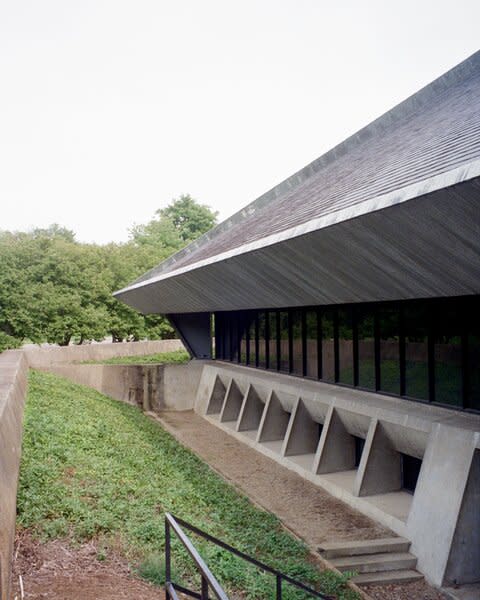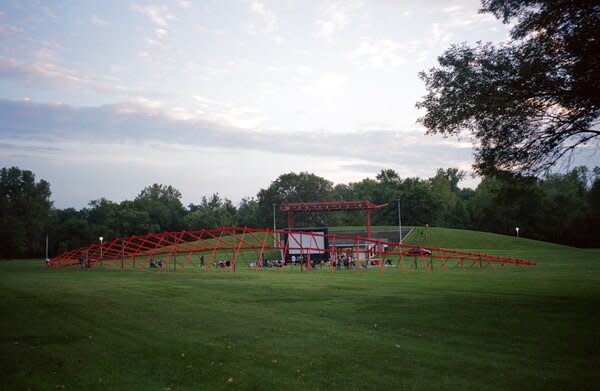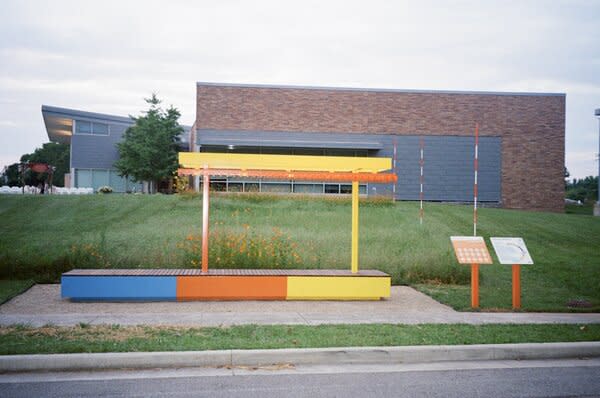How This Indiana City Is Trying to Redefine Architecture—and Itself
- Oops!Something went wrong.Please try again later.
- Oops!Something went wrong.Please try again later.
In a town famed for its architectural history—with buildings by heavy hitters like Eero Saarinen and I.M. Pei—Exhibit Columbus pushes its legacy forward by asking the community what they want next.

If you’re into design, you’ve heard of architects like Eliel and Eero Saarinen, I.M. Pei, Alexander Girard, and Kevin Roche. But it’s only if you’re really into design that you’ll also have heard of Columbus, Indiana, where those midcentury masters carved out a capital of modernism.
For those unfamiliar (including myself a few months ago), Columbus tells a great story. Joseph Irwin Miller, the chairman of local engine company Cummins, was unimpressed with the public buildings throughout the city. So in 1954, he inaugurated the Cummins Foundation, which offered to pay the architect fee for any public project if the architect chosen could be found on his list of pre-approved modernists. Because of Miller, Columbus is freckled with architectural gems.
While many of the public facilities are still in operation today—take Kevin Roche’s post office, for example—the Landmark Columbus Foundation carries the torch forward with Exhibit Columbus, a biannual exploration of architecture, art, and design that’s distinctly forward-facing while referencing its backdrop of midcentury masterpieces.
For its fourth cycle, the exhibition turns its focus on Columbus’s population itself with Public by Design, where four firms, seven university research fellows, and one student group settle into the downtown area with projects that aim at urban regeneration. The theme flips the traditional architectural process—in which austere architects serve up a design for the people, but not by the people—instead carving out space for community input. As Chris Marcinkoski of PORT puts it, each installation can be considered an "instrument of engagement"—an addendum to the city written by the community.
In a city with such a historic pedigree, the temporary installations act as distinctly forward-thinking counterpoints. Take Echoes of the Hill, designed by Harlem-based Studio Zewde. After asking community members to identify their favorite spaces in town, the team noticed a hotspot on a man-made hill in Michael Van Valkenburgh’s Mill Race Park, where a Stanley Saitowitz-designed amphitheater stands. Studio Zewde’s red bamboo structure sits in the field below the hill, intending to pull the community outward to expand the utility of the 85-acre green space. Perhaps most interesting, principal Sara Zewde served as a teaching assistant for Van Valkenburg, and reconnected with him during the design process. As we near the park’s 30th anniversary, the field seems a good place to start designing its future.
See the full story on Dwell.com: How This Indiana City Is Trying to Redefine Architecture—and Itself
Related stories:




